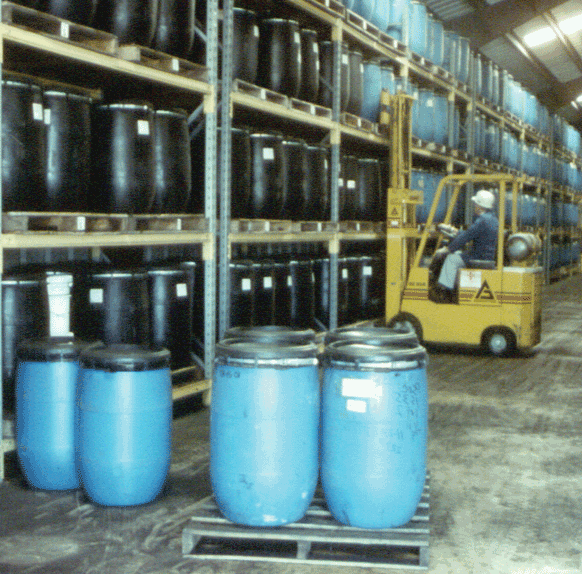The EMS Energy Institute in industry and the community
By Shea Winton
The EMS Energy Institute has an office dedicated to outreach efforts within the industrial, commercial and residential sectors of Pennsylvania. These outreach initiatives range from providing technical assistance and print resources to holding workshops and courses, participating in energy camps and visiting schools. Below are some of the ongoing initiatives in which the Institute is involved.
 Coal Sample Bank
Coal Sample Bank
Penn State has collected over 1,400 samples since 1967. Over 1,100 of those are still available for distribution. The EMS Energy Institute also maintains the Penn State Coal Database, which contains information on all of the samples.
Hardgrove Grindability Index (HGI) Standard Reference Samples
Penn State is the world’s sole producer and supplier of HGI reference samples, which are samples of coal used to calibrate instruments that are designed to determine the ease with which coal can be pulverized.
Center for Quantitative Imaging
This research facility combines state-of-the-art X-ray Computed Tomography (CT) equipment with advanced computational facilities and data mining expertise to provide three-dimensional internal maps of materials and processes.
 Pennsylvania Technical Assistance Program (PennTAP)
Pennsylvania Technical Assistance Program (PennTAP)
PennTAP is a program that helps Pennsylvania companies, especially smaller firms, improve their competitiveness by providing a limited amount of free technology assistance.
The EMS Energy Institute’s involvement consists of assisting with energy efficiency programs for industries. Specifically, the Institute does solar assessments for businesses, which look at building orientation, roof stability, the surrounding environment and more to determine if solar energy is feasible.
 Pennsylvania Biomass Working Group
Pennsylvania Biomass Working Group
The PA Biomass Working Group is a collection of businesses, universities, government agencies, foresters, economic development partners and environmental advocacy groups working together to help residents of PA and the Northeast learn how renewable fuels can reduce costs and build community self-reliance in an environmentally sound way.
The group promotes renewable energy projects that encourage the use of locally produced sustainable fuels to displace foreign energy purchases and cycle money back into the local economy. The group’s activities are focused around four fuel alternatives: PA biodiesl productions, PA ethanol production, energy from wood and anaerobic digestions.
One house at a time — helping PA become more energy efficient
Now, more than ever, energy and the need to be more energy efficient is on the minds of leaders in Pennsylvania and the Nation. For example, the recently approved economic stimulus plan appropriated over $41 billion for energy related spending. In addition, the State of Pennsylvania, with assistance from PA Home Energy, has just launched a program allowing homeowners to apply for loans with the intent of making energy efficiency home improvements.
With all the attention surrounding energy efficiency, it seems appropriate that a significant portion of the EMS Energy Institute’s outreach efforts revolve around energy efficiency.
West Penn Power Sustainable Energy Fund
Penn State coordinates the West Penn Power Sustainable Energy Fund (WPPSEF), which invests in the deployment of clean energy technologies throughout the West Penn Power service region in Pennsylvania. Investments are made to promote the use of renewable and clean energy, energy conservation and energy efficiency, and the attraction, establishment, and retention of sustainable energy businesses.
 PA Home Energy
PA Home Energy
The EMS Energy Institute developed and now manages PA Home Energy, currently the largest state energy efficiency program. The program, funded by WPPSEF, has built a network of service providers throughout Pennsylvania that can help homeowners and home builders understand and reduce their energy use. PA Home Energy requires all of the service providers in this network to receive training and carry specific certifications.
The program is unique because it targets new and existing homes. New home builders can use the PA Home Energy Web site to find a certified service provider in their area that can help them through the process of building their home to ENERGY STAR® standards. Existing homeowners can also find a service provider to help them reduce their energy use through a whole-home energy audit. These audits look at things such as health and safety issues, water efficiency, and drafts in the home. The service provider then makes specific recommendations for how to improve the efficiency of the home.
PA Home Energy uses a comprehensive whole-house approach that analyzes the overall performance of the home rather than evaluating a single component (e.g. furnace). The program relies on ENERGY STAR, a government-backed program, to denote a house built to specific energy standards. While the ENERGY STAR brand is widely recognized by consumers for products such as household appliances, lighting products, heating and cooling systems, and windows, the use of the ENERGY STAR label to designate energy efficient homes has not been used in Pennsylvania to any significant extent. The ENERGY STAR label is valuable because it allows a homeowner or home buyer to pinpoint the amount of energy used in a home.
PA Home Energy provides additional outreach through community education and conferences. The program has also been showcased on the public broadcasting station in Harrisburg and makes regular appearances on WTAJ in central PA.
In March, the WPPSEF received “Special Recognition for Excellence in Home Performance with ENERGY STAR” for its launch of the PA Home Energy program in 2008.

